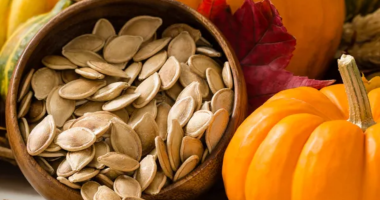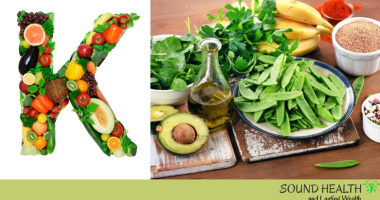Yes, it is perfectly safe and beneficial to drink protein shakes on non-workout days. In fact, protein is essential for muscle growth and repair, and it is important to consume enough protein throughout the day, even on rest days.
Here are some of the benefits of drinking protein shakes on non-workout days:
- Promote muscle growth and repair. Muscle fibers break down during exercise, and protein is needed to repair and rebuild them. Even on rest days, your muscles are still repairing themselves, so it is important to consume enough protein to support this process.
- Reduce muscle soreness. Protein can help to reduce muscle soreness after exercise. This is because protein helps to repair damaged muscle fibers and reduce inflammation.
- Boost metabolism. Protein can help to boost metabolism, which means that you burn more calories throughout the day, even at rest. This can be helpful for weight loss or weight maintenance.
- Support satiety. Protein is a satiating macronutrient, which means that it helps you to feel full after eating. This can help to reduce your overall calorie intake and make it easier to stick to your diet goals.
Protein shakes are a convenient and easy way to consume protein on non-workout days. They can be made with a variety of ingredients, such as milk, water, fruit, and vegetables. You can also add other supplements to your protein shakes, such as creatine, BCAAs, or glutamine.
ALSO READ: 8 Protein Powders To Stay Away From Right Now
Key facts about protein shakes
Here are some key facts about protein shakes:
- Protein shakes are a convenient way to increase your protein intake. They are made with protein powder, which is a concentrated source of protein that is easily absorbed by the body.
- Protein shakes can help with weight loss and muscle gain. Protein is essential for building and repairing muscle tissue. It also helps to increase satiety, which can lead to decreased calorie intake and weight loss.
- Protein shakes can be used to supplement a healthy diet or to meet the increased protein needs of athletes and people with certain medical conditions.
- Protein shakes come in a variety of flavors and can be mixed with milk, water, or other liquids. They can also be added to smoothies, yogurt, and oatmeal.
Here are some additional facts about protein shakes:
- Protein shakes are not a magic bullet for weight loss or muscle gain. They should be used in conjunction with a healthy diet and regular exercise.
- Protein shakes can vary in quality and ingredients. It is important to choose a protein powder that is made from high-quality ingredients and is free from artificial sweeteners and additives.
- Protein shakes are not a substitute for whole foods. It is important to eat a variety of protein-rich foods, such as meat, poultry, fish, eggs, dairy products, legumes, and nuts.
What to look for in protein shakes
When choosing a protein shake, there are a few key things to look for:
- Protein source: Whey protein is the most popular type of protein powder because it is easily absorbed by the body and has a high biological value (BV), which measures how well the body can utilize the protein. Other good options include soy protein, pea protein, and hemp protein.
- Protein content: Look for a protein powder that has at least 20 grams of protein per serving.
- Sugar content: Avoid protein powders that have added sugar or artificial sweeteners. If you need a sweet taste, try adding a natural sweetener like stevia or honey.
- Other ingredients: Look for a protein powder that has as few ingredients as possible and avoid those that contain artificial flavors, colors, and preservatives.
Here are some additional tips for choosing a protein shake:
- Read the label carefully and make sure you understand all of the ingredients.
- Choose a protein powder that is certified by a third-party organization, such as NSF International or Informed Sport. This means that the powder has been tested for purity and quality.
- Consider your dietary needs. If you are lactose intolerant, choose a lactose-free protein powder. If you are vegan or vegetarian, choose a plant-based protein powder.
- Try different protein powders to find one that you like the taste of and that is easy to digest.
Once you have chosen a protein powder, you can mix it with milk, water, or other liquids to make a shake. You can also add other ingredients to your shake, such as fruits, vegetables, nuts, and seeds.
Here are some examples of good protein shakes:
- Whey protein shake with berries and yogurt
- Soy protein shake with spinach and banana
- Pea protein shake with avocado and nuts
- Hemp protein shake with peanut butter and cocoa powder
Protein shakes can be a healthy and convenient way to increase your protein intake. By following the tips above, you can choose a protein powder that is right for you and your needs.
What to avoid in a protein shake
Here are some things to avoid in a protein shake:
- Added sugar: Protein shakes should be low in added sugar, ideally less than 5 grams per serving. Avoid protein shakes that have artificial sweeteners, such as sucralose or aspartame.
- Artificial flavors and colors: Artificial flavors and colors can be unhealthy and should be avoided in protein shakes.
- Fillers: Fillers, such as maltodextrin and corn syrup solids, are often added to protein shakes to increase their volume and reduce their cost. However, they have little nutritional value and can cause digestive problems in some people.
- Heavy metals and other contaminants: Protein shakes may contain heavy metals, such as lead and arsenic, and other contaminants, such as pesticides and bisphenol A (BPA). It is important to choose a protein powder that is third-party certified to be free of these contaminants.
Here are some additional things to avoid in a protein shake:
- Protein blends: Protein blends often contain a mixture of different types of protein, such as whey, soy, and pea protein. While this may seem like a good thing, it can actually make it more difficult for your body to absorb the protein. It is best to choose a protein powder that contains a single type of protein.
- Proprietary blends: Proprietary blends are mixtures of ingredients that are not disclosed on the product label. This can make it difficult to know what you are actually consuming. Avoid protein powders that contain proprietary blends.
- Unsupported claims: Some protein powders make unsupported claims about their benefits, such as the ability to build muscle mass quickly or burn fat. It is important to be skeptical of these claims and to choose a protein powder that is supported by scientific research.
By avoiding these things, you can choose a protein shake that is healthy and nutritious.
How to incorporate protein shakes into your diet
Here are some tips on how to incorporate protein shakes into your diet:
- Replace a meal with a protein shake. This is a good option if you are short on time or if you are trying to lose weight.
- Have a protein shake after a workout. This will help to repair and rebuild your muscle tissue.
- Drink a protein shake as a snack. This can help to keep you feeling full and satisfied.
- Add protein powder to your smoothies, yogurt, or oatmeal. This is a good way to boost the protein content of your meals and snacks.
Here are some specific examples of how to incorporate protein shakes into your diet:
- Breakfast: Have a protein shake with berries and yogurt instead of cereal or toast.
- Lunch: Replace a sandwich or salad with a protein shake.
- Dinner: Have a protein shake with vegetables and a healthy fat source, such as avocado or nuts, instead of a traditional meal.
- Post-workout snack: Have a protein shake with fruit and a healthy fat source.
- Snack: Add protein powder to your smoothie, yogurt, or oatmeal.
It is important to note that protein shakes should not replace all of the meals in your diet. It is important to eat a variety of whole foods to get all of the nutrients that you need.
Here are some additional tips for incorporating protein shakes into your diet:
- Choose a protein powder that you like the taste of. This will make you more likely to drink it regularly.
- Experiment with different flavors and ingredients. There are many different ways to make a protein shake.
- Make protein shakes ahead of time and store them in the fridge or freezer. This will make it easy to grab a shake on the go.
- Add protein powder to your favorite recipes. You can add protein powder to pancakes, waffles, muffins, and even baked goods.
By following these tips, you can easily incorporate protein shakes into your diet.
Final Words…
Protein shakes can be a healthy and convenient way to increase your protein intake. They are especially beneficial for people who are trying to lose weight, gain muscle, or improve their athletic performance.
When choosing a protein shake, look for one that is made from high-quality ingredients and has at least 20 grams of protein per serving. Avoid protein shakes that have added sugar or artificial sweeteners.
You can incorporate protein shakes into your diet by replacing a meal, having one after a workout, or drinking one as a snack. You can also add protein powder to your smoothies, yogurt, or oatmeal.
Just remember that protein shakes should not replace all of the meals in your diet. It is important to eat a variety of whole foods to get all of the nutrients that you need.










